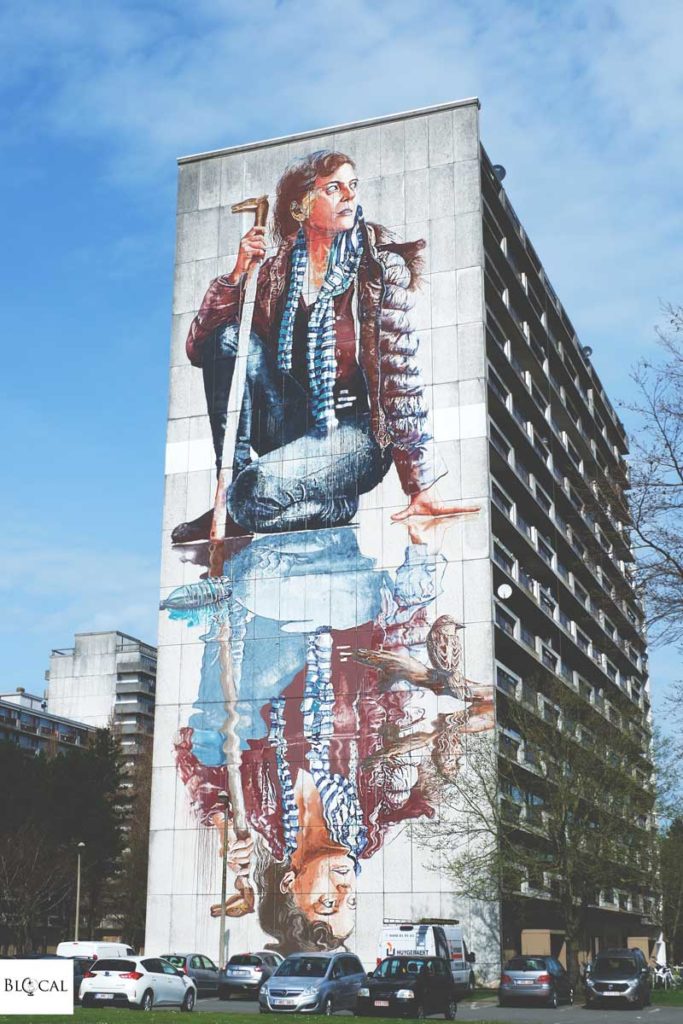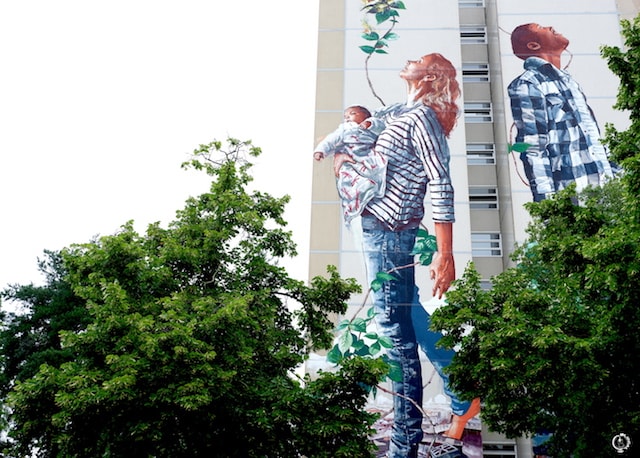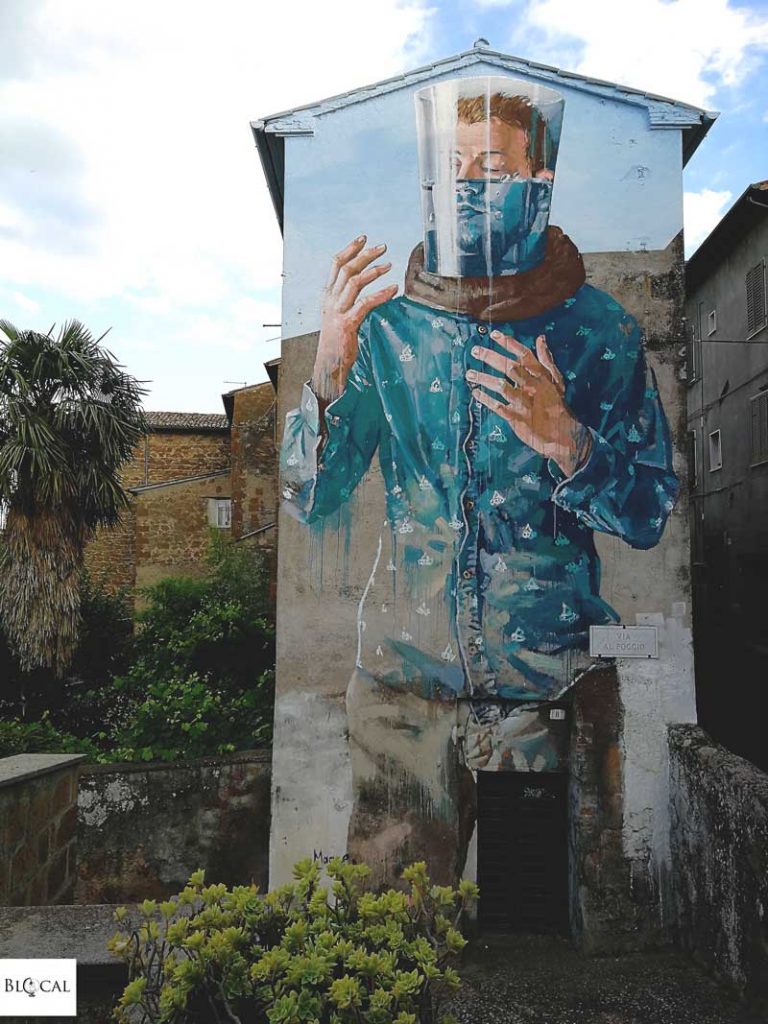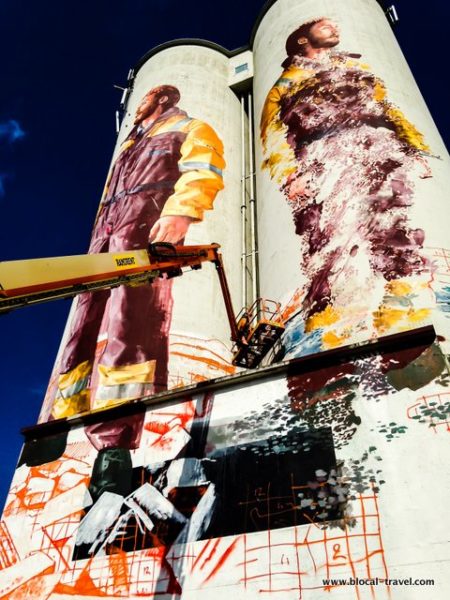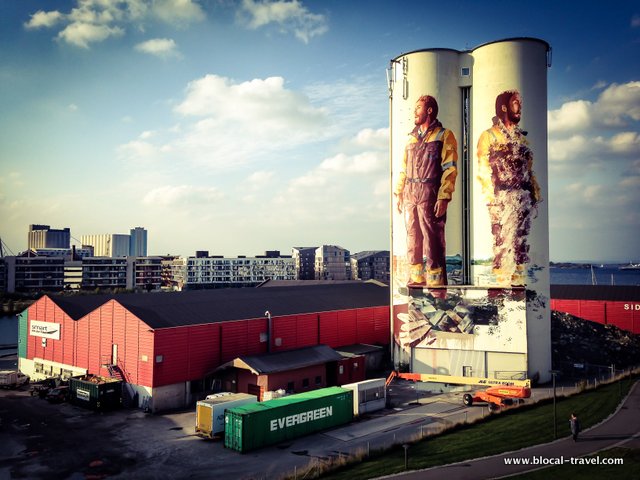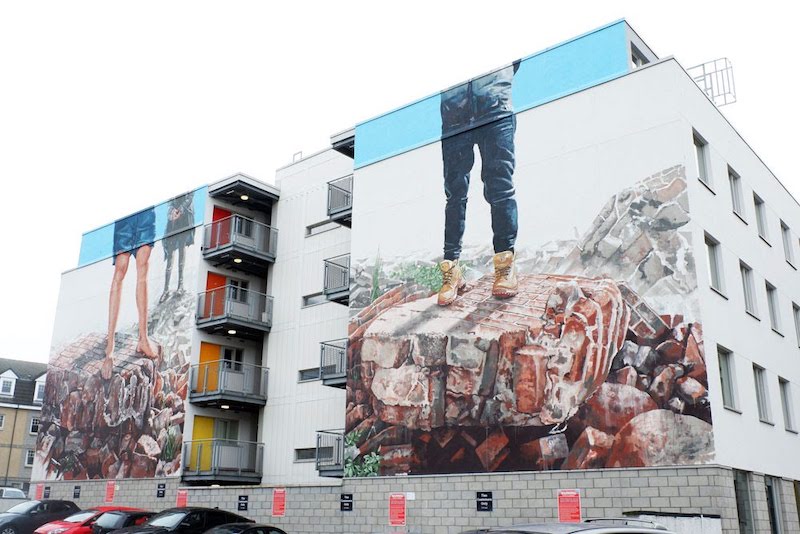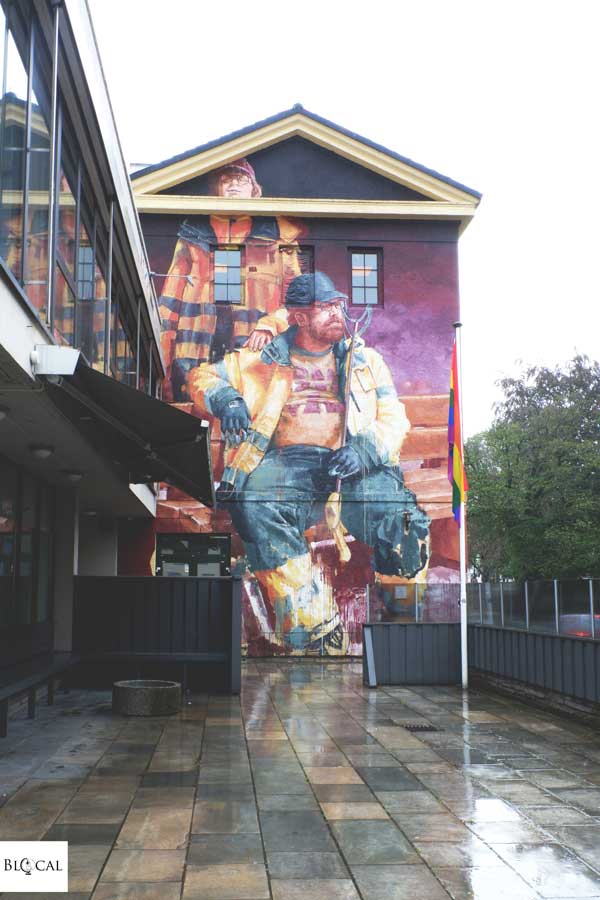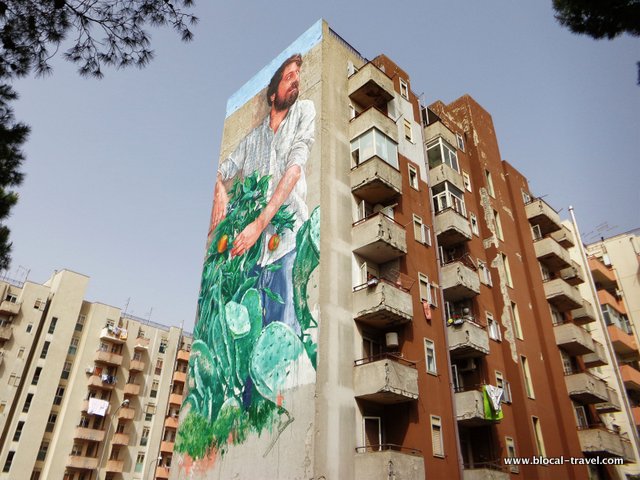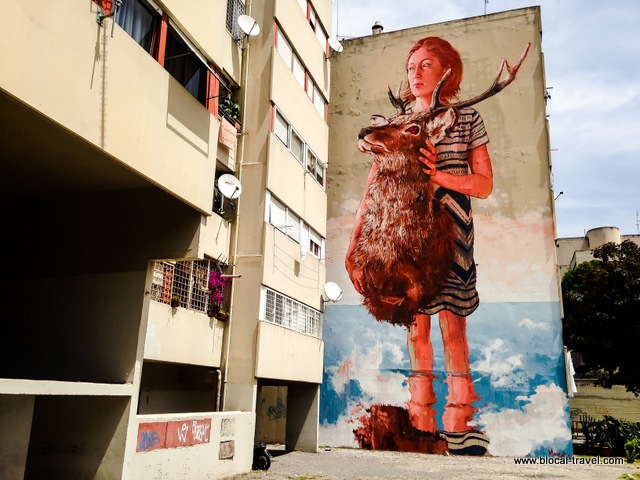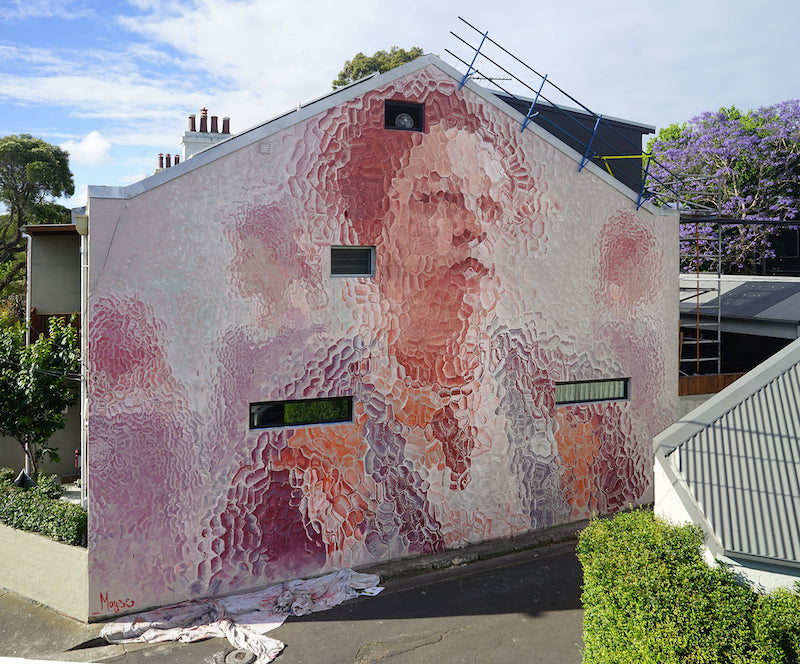Fintan Magee is an Australian street artist who creates large-scale, socially conscious murals all over the world.
Fintan Magee is one of the most interesting and well-known street artists working today.
Fintan Magee was born in 1985 in Lismore, Australia. He developed an interest in graffiti during his teenage years, often painting illegally on walls in his hometown. He eventually began his professional career in 2009 after obtaining his Bachelor of Fine Arts at Griffith University, QCA.
Since then, he has traveled worldwide to paint his artworks on walls from over 35 countries and collaborated with numerous art institutions and city councils to create large-scale public paintings. He has exhibited his art in various galleries and other art spaces and has been featured in multiple books and magazines.
He primarily paints large-scale murals, and his work can be found worldwide in locations such as Sydney, Berlin, Stavanger, Aberdeen, Ostend, Rome, Acquapendente, and Ragusa. Fintan Magee lives and works in Brisbane, Australia.
Fintan Magee’s work is inspired by cartoons, children’s books, nature, and architecture.
Fintan Magee’s murals have a bright and colorful aesthetic, but his subject matter is often thought-provoking and draws inspiration from cartoons, children’s books, contemporary culture, and current news.
In Berlin, I spotted a stunning mural he painted at Art Park Tegel titled “Circle of Life.” On this occasion, Fintan Magee was inspired by the children’s book “A Child’s Garden” by Michael Foreman, where he found the story of a couple separated by war, with a baby representing their hope for what the future holds.
Fintan Magee’s murals often tackle political and controversial topics.
Magee’s artwork typically features bold, bright colors and abstract patterns. He often combines scenes from everyday life, such as cityscapes, with abstract shapes and motifs. His works often explore themes of displacement and environmentalism, criticizing urbanization and the often-tense relationship between humanity and the natural world.
Fintan Magee explored human impact on nature and the environment in Acquapendente, a medieval village in central Italy boasting a great urban art collection. Here, Fintan Magee painted “Drowning while standing” for Urban Vision Festival 2017.
This mural by Fintan Magee clearly states that climate change will eventually kill us. Water not only asphyxiates the protagonist of the artwork but has made him inaudible in the first place, like all those raising the environmental issue. At the same time, nobody -especially politicians and those in power- listens to them.
Fintan Magee’s work is often political. The most political murals by Fintan Magee I could witness coming to life are those he created for the renowned Nuart Festival (Stavanger 2016, Aberdeen 2017, Stavanger 2018).
For Nuart 2016, Fintan Magee painted a colossal diptych that -sadly- was torn down a few years ago. Titled “Monument to a disappearing monument,” this epic work on 32-meter silos was about the fall of the price of oil that brought unemployment and economic crisis to the oil-driven city of Stavanger. The artwork depicts a man working in the oil industry, and his reflection, faded and blurred, as the economic future of the working class and -therefore- of the city.
Invited to Aberdeen for the first edition of the Nuart Festival (2017), Fintan Magee painted a gigantic dypthic that speaks against Trumpism and those who wish to build walls and divide us. This time, inspiration came from a local issue: the realization of a Donald Trump Golf Course in Aberdeenshire. The construction of Trump’s Golf Course has destroyed hundreds of acres of dunes and pristine natural coastline while forcing local farmers away. “The Broken Wall” depicts three locals standing on top of a broken wall, probably the same locals that now fly Mexican flags around the golf course to protest Trump and his actions.
Back in Stavanger in 2018, Fintan Magee collaborated with a local NGO to promote a “social inclusion through street art” program, which aims to raise awareness about marginalized groups. The efforts of this association to include these individuals in everyday life are remarkable, as highlighted by Fintan Magee in this mural depicting two members of the NGO’s “Clean City Gang,” a group collecting garbage from the streets.
Fintan Magee’s paintings highlight the extraordinary nature of our everyday existence.
The art of Fintan Magee transports viewers beyond mundane routines and expectations into a world of unexpected beauty and chaotic balance. The street artist often combines elements of realism and surrealism in his art, blending his signature brushwork with abstract elements.
Magee’s work is characterized by its exploration of the urban environment and its decay. His most famous work mixes surreal and symbolic imagery to explore waste, consumption, loss, and transition topics. However, Magee also often explores sentimentality and nostalgia related to childhood memories.
“Childhood memories and personal experiences inform my work, but I also like to link personal experience to broader social issues like climate change or class struggle. In some works, I feel like I’m telling stories that I don’t yet fully understand, which brings an element of chaos or the subliminal.”
Fintan Magee
The street artist used a personal experience to describe a broader issue during the realization of “The Roadkill,” the large-scale mural painted in Rome, Italy, in 2016.
The mural depicts a woman staring at the horizon and holding a deer’s head -an image coming from the artist’s childhood in the suburbs of Brisbane, Australia, where he recalls a car accident caused by a deer crossing the street. In this work, Fintan Magee questions the ethics of hunting and wonders about the equilibrium of nature. Once again, Fintan Magee takes the issue from a real world -where deer brought to Australia by Europeans are in conflict over the same food with the more aboriginal kangaroos and therefore despised and hunted by locals- and sets it into a dreamlike, suspended world where the border between life and death is erased.
In 2016, Fintan Magee was in Rome for the opening of his solo show entitled “The Backwaters, Stories from the Endless Suburbia” at Galleria Varsi. This solo exhibition by Magee was about his childhood memories growing up in Australia. He told stories of an isolated country home to people worldwide, including Indians, Filipinos, Maoris, Vietnamese, and Pakistanis. According to the artist, this cultural melting pot creates a unique and authentic experience for all who visit his country.
The evolution of Fintan Magee’s street art style
Lately, Fintan Magee has been experimenting with a “beveled glass technique” that makes his subjects look out of focus and distant, thus conveying an even more surreal vibe than the style he mastered until now.
To put it in Fintan Magee’s words:
“The glass effect breaks, blurs and deconstructs the images, acting as an allegory for the passage of lost time and the inconsistency of memory”
Fintan Magee
This new style is extremely fascinating, both for its mesmerizing effect and because it demands a higher degree of participation from the viewer. Now, the passer-by has an active role in completing the artwork’s meaning; their visual memory and interpretation are essential in cutting through the blur and reconstructing the image.
